
Intercooler Design and Fitment
beagley - 24/3/11 at 01:40 PM
I've been readily chewing through my new favorite book...

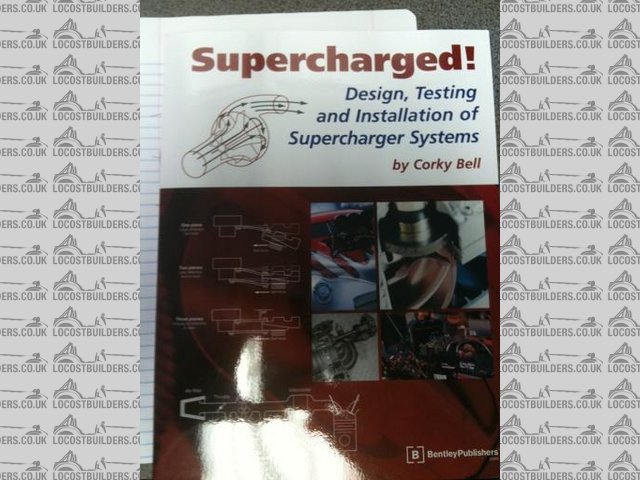
My New Favorite Book
... and going back over some build diaries and had a question that hopefully you all can answer and/or explain. I just finished the chapter on
intercooler design and am wondering about two different setups.

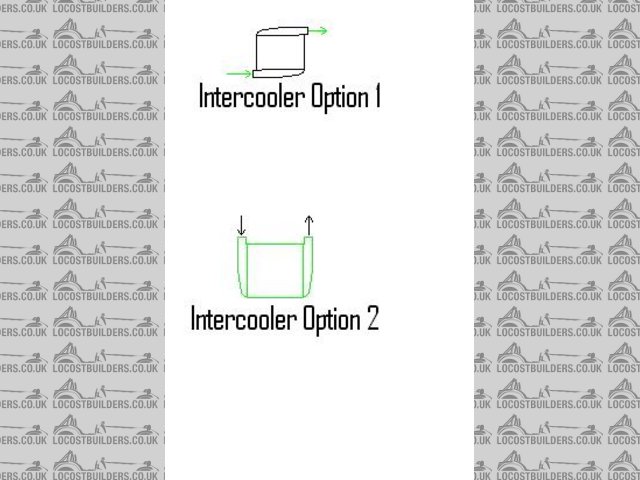
Intercooler Options
According to the book, Option 1 will provide a small increase in efficiency because it allows more charged air per time across the width of the
intercooler with less travel distance to the outlet nozzle. (I'm no master of mspaint, but the intercooler SHOULD look like a rectangle instead
of a square). I've seen a couple of builders use Option 2 because I'm sure that fitting an intercooler in the nose cone of a 7 is a tight
squeeze. Is it even possible to use a design like Option1 in a locost without fouling the chassis?
Beags
flak monkey - 24/3/11 at 02:32 PM
Wont make that much difference to be honest. The most important thing is having a big enough intercooler so you dont drop too much pressure. That
means either core thickness or height (number of tubes).
You will struggle to fit an intercooler like design 1 into a locost chassis too... There was less than 5mm all round my rad/intercooler set up.
Basically go with the biggest frontal area and thickness you can fit in a locost and it will be fine  Though it is true you can go too big with an
intercooler and introduce lag, you'll not be able to get that effect in a locost as there simply isnt space to do it.
Though it is true you can go too big with an
intercooler and introduce lag, you'll not be able to get that effect in a locost as there simply isnt space to do it.
FWIW my charge temps never went above 35deg in the baking summer last year with just under 1 bar of boost with the intercooler I fitted.
This is the drawing I did for mine:
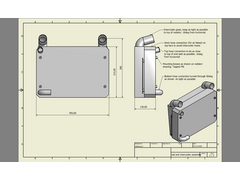

coyoteboy - 24/3/11 at 03:03 PM
For the difference you'll see on a normal road setup I'd suggest either version will be indistinguishable from each other in operation,
usually packaging is the key factor in intercooler design. (obviously after getting the correct size).
Have you considered a water to air system - they're heavier but much better for high power in small packages with very low pressure drop on the
air side and one 12"x8"X3" is capable of cooling for a 350-400hp turbocharged 2 litre.
[Edited on 24/3/11 by coyoteboy]
[Edited on 24/3/11 by coyoteboy]
Bare - 24/3/11 at 03:37 PM
Do try to avoid placing whatever intercooler you settle on directly in front of the rad, or even worse comp-letely covering the rad . This WILL
elevate engine temps as the poor radiator will have to cope with reduced airflow And preheated 'cooling' air.
Subaru setup: flatish under the hood centre may be a possible?
coyoteboy - 24/3/11 at 03:43 PM
Intercoolers provide very little pre-heating to engine rads, the core temp rarely rises above 30-40C and the exit air temp not much higher than
ambient so unless your main engine rad is undersized (could be in a 7 I suppose) I can't see much in the way of trouble. Subaru setup is about
the worst IC setup you can have, it sits at the top of a hot engine bay and unless you're moving fairly quick it's basically an interwarmer.
Keep the IC low and up front if poss.
Someone, however, should have given your advice to Toyota who placed in front of the engine rad of my car:
1 AC rad (full size of engine rad)
2 Chargecooler pre rad (3/4 size of engine rad)
and much smaller:
3 Gearbox oil cooler rad
4 Power steering cooler. 
[Edited on 24/3/11 by coyoteboy]
mcerd1 - 24/3/11 at 03:50 PM
a few pics of other folks cars....


flak monkey - 24/3/11 at 03:57 PM
quote:
Originally posted by Bare
Do try to avoid placing whatever intercooler you settle on directly in front of the rad, or even worse comp-letely covering the rad . This WILL
elevate engine temps as the poor radiator will have to cope with reduced airflow And preheated 'cooling' air.
Subaru setup: flatish under the hood centre may be a possible?
Rubbish...
As long as cooling wasn't marginal anyway it wont have any significant impact. As long as the intercooler is shrouded where it meets the rad the
airflow wont be compromised. Its when people leave a gap you end up with zero velocity airflow through the rad and overheating problems.
The suggestion of flat under the bonnet is also a very bad idea. The best intercooler performance is in direct airflow at the front of the car.
Basically for the reasons Coyoteboy says. Production cars do it for space reasons, but its very bad practice and charge temps shoot up in stationary
or slow moving traffic which leads to problems.
Top entry and exit also allows you to keep the rest of the pipework really short 

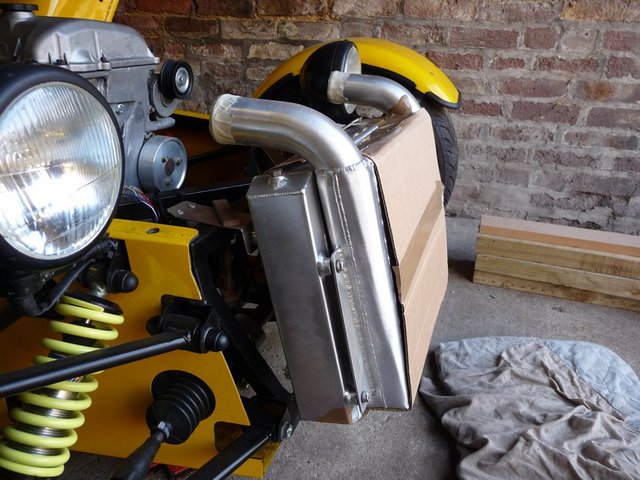
rad fitting 1

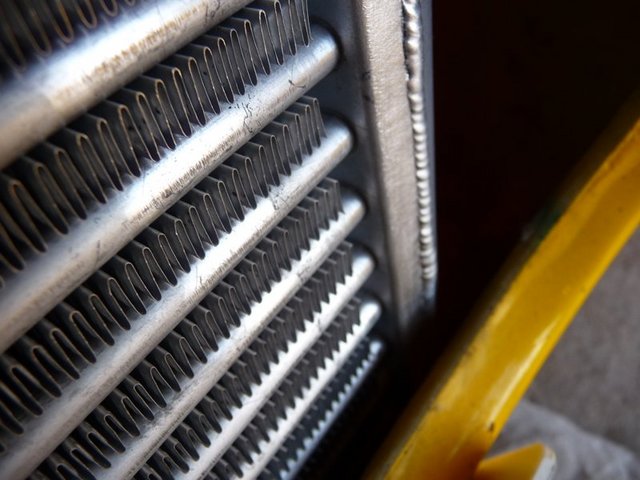
Rad fitting6

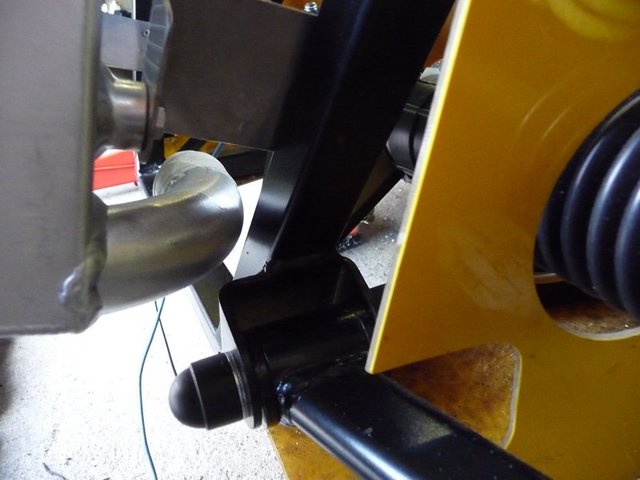
Rad fitting 3

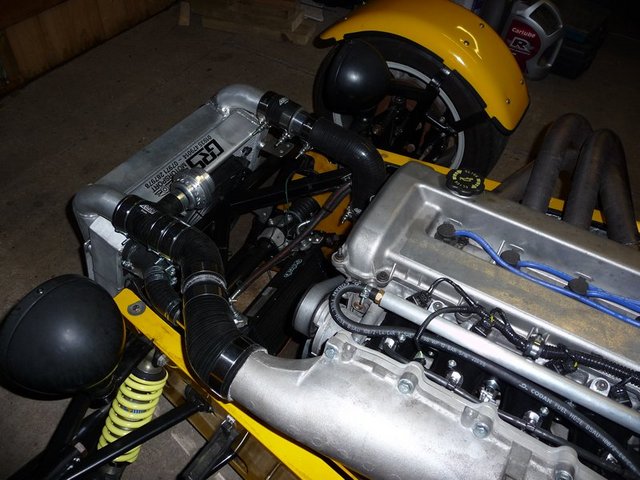
Final intercooler hoses 2

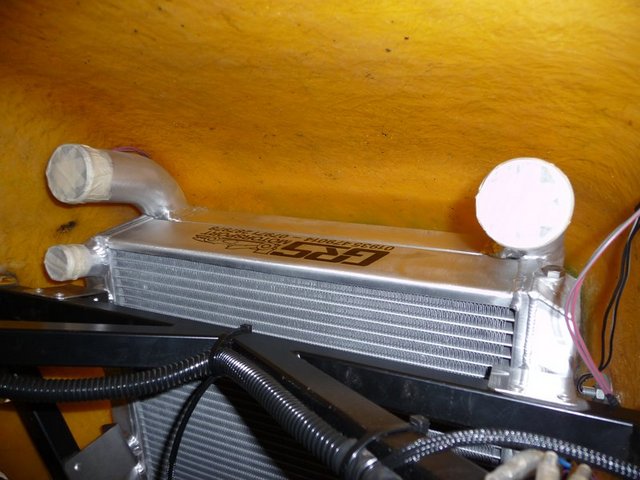
Rad fitting 7
[Edited on 24/3/11 by flak monkey]
coyoteboy - 24/3/11 at 05:14 PM
Just an FYI on the interwarmer design originally spec'd on the ST185. It's a beaut of a device (next to no pressure drop and very effective)
but its placement means that in traffic I can watch the charge temp rise to 70C in a matter of 3 minutes and it takes a good 5 minutes of open highway
driving to get it back down to below 40. OFF boost.

The standard solution is to mount a low profile SPAL fan on top of it and have it running constantly but that makes the car sound like a hoover. Which
is kinda cool, for about 2 minutes. But the solution Toyota chose on their better version was to use WTA, as you can keep the coolant flowing and
convect the heat away up front where the air is cool, while maintaining the short IC routing across the head, but even so the WTA suffers heat soak in
traffic, it just takes a lot longer to build up heat due to the mass of water and clears faster due to the optimal rad positioning, plus it's
easier to shield the WTA setup as it doesnt require nice airflow to keep it cool.

They kept the WTA setup in their actual TTE rally cars too, when they had the choice to use FMIC, though their decision process is of course
unknown.
[Edited on 24/3/11 by coyoteboy]
welderman - 24/3/11 at 05:28 PM
What about a charge cooler
coyoteboy - 24/3/11 at 05:34 PM
ATA and WTA are both chargecoolers 
ashg - 24/3/11 at 08:25 PM
i have got a pace charge cooler setup on mine. have never seen it go above 45degrees even left idling for 30-40 mins on the drive.







mcerd1 - 24/3/11 at 10:18 PM
or you could forget the intercoouler all together 

coyoteboy - 25/3/11 at 12:23 AM
Aye, you could....

 Or not (boost level depending!)
Or not (boost level depending!)
westy turbo - 25/3/11 at 10:02 AM
have the same set up like Jasons+ water injection,and at 1.05 made 395 and inlet temps were fine!

 Though it is true you can go too big with an
intercooler and introduce lag, you'll not be able to get that effect in a locost as there simply isnt space to do it.
Though it is true you can go too big with an
intercooler and introduce lag, you'll not be able to get that effect in a locost as there simply isnt space to do it. 

























